Feeling overwhelmed every time you open your closet? Wondering if there’s a way to actually enjoy getting dressed in the morning?
Let’s tackle the chaos together: How To Spring Clean Your Wardrobe is your guide to a clutter-free, organized, and effortlessly stylish closet.
How do I refresh and organize my closet for spring?
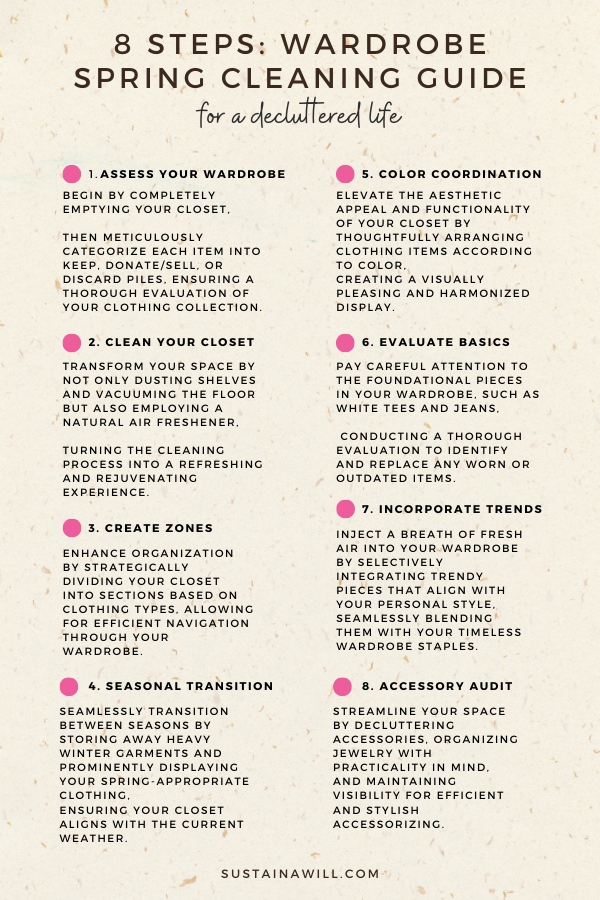
Spring Clean Your Wardrobe Guide
1. Assess Your Current Wardrobe
- Begin the process by emptying your entire closet. Lay out every piece of clothing where you can see it clearly.
- As you go through each item, ask yourself if it brings you joy or if you’ve worn it in the last year.
- Create three piles: keep, donate/sell, and discard. This step sets the foundation for a purposeful and organized closet.
- If you haven’t already, use this spring cleaning as an opportunity to curate a capsule wardrobe.
2. Clean Your Closet
- Once your closet is empty, take the opportunity to clean and refresh the space.
- Dust and wipe down shelves, vacuum the floor, and consider using a natural air freshener to give your closet a pleasant scent.
- A clean and fresh environment will make the organizing process more enjoyable.
3. Create Zones
- Divide your closet into sections based on clothing types. Allocate specific areas for tops, bottoms, dresses, and outerwear.
- Consider creating separate sections for casual and formal wear.
- Organizing by zones makes it easier to find what you need quickly and helps maintain order in the long run.
4. Seasonal Transition
- As spring arrives, pack away heavy winter clothes in storage bins or vacuum-sealed bags. Store these in a designated space or under the bed.
- Bring forward your spring-appropriate clothing, making them easily accessible. This step ensures that your closet reflects the current season.
5. Color Coordination
- Arrange your clothing by color to create a visually appealing and organized look. This not only makes finding items easier but also adds a touch of aesthetic harmony to your closet.
- Invest in matching hangers for a cohesive appearance that enhances the overall visual appeal.
6. Evaluate Your Basics
- Take a closer look at your wardrobe basics, such as white tees, jeans, and essential pieces. Check for wear and tear, and replace or update items that have seen better days.
- Basics are the foundation of your wardrobe, so keeping them in good condition is key to a functional closet.
7. Incorporate Trends
- Spring is the perfect time to infuse some fresh and trendy pieces into your wardrobe. Identify a few key trends that resonate with your style and incorporate them strategically.
- Mix these trendy pieces with your timeless classics for a well-balanced and updated look.
8. Accessory Audit
- Accessories can easily clutter your space if not organized properly. Declutter your accessories, keeping only those you regularly wear.
- Organize jewelry using trays or hooks.
- Consider implementing a system to keep accessories visible and easily accessible, adding the finishing touches to your outfits.
Common Pain Points and Tips to Overcome Them
1. Procrastination
- Pain Point: The enormity of the task can lead to procrastination.
- Tip: Break down the process into smaller tasks and tackle one at a time. Set a timer for 15-30 minutes to make it more manageable. Celebrate small victories to stay motivated.
2. Emotional Attachment
- Pain Point: Struggling to part with sentimental items.
- Tip: Take photos of sentimental pieces before letting them go. Keep a small memory box for truly special items. Remember, the memories associated with the item will stay with you, even if the physical object doesn’t.
3. Limited Space
- Pain Point: Not having enough space for all your clothes.
- Tip: Prioritize your most-worn items and store off-season clothes elsewhere. Consider investing in storage solutions like under-bed storage or a wardrobe organizer to maximize your space.
4. Decision Fatigue
- Pain Point: Difficulty deciding what to keep or discard.
- Tip: Ask yourself if you’ve worn the item in the past year. If not, it may be time to let it go. Consider if it fits well and if you feel confident in it. Use these criteria as a guide to simplify decision-making.
5. Lack of Motivation
- Pain Point: Feeling overwhelmed and lacking motivation.
- Tip: Invite a friend to help you or play music to make the task more enjoyable. Set short breaks to avoid burnout. Reward yourself after completing each step, creating a positive association with the process.
6. Unworn Items
- Pain Point: Keeping items with tags or rarely worn.
- Tip: Challenge yourself to wear unworn items within the next month. If they still don’t make it into your regular rotation, consider donating or selling them. Letting go can be liberating and create space for items you truly love.
7. Sustainability Concerns
- Pain Point: Unsure about the environmental impact of discarding clothes.
- Tip: Donate gently-used items to local charities or consider organizing a clothing swap with friends to give items a second life. Be mindful of your clothing consumption and aim for quality pieces that stand the test of time.
Remember, the goal is not just to organize but to curate a closet that aligns with your current lifestyle and brings you joy. Enjoy the process and the refreshed space you create!
How do you deep clean a very dirty wardrobe?

Tips for Deep Cleaning a Very Dirty Wardrobe
1. Remove Everything
- Start by emptying the entire wardrobe. This allows you to access every nook and cranny and ensures a thorough cleaning.
2. Vacuum and Dust
- Vacuum the interior to remove dust, dirt, and loose debris. Use a nozzle attachment to reach corners and edges. Follow up by dusting surfaces with a microfiber cloth or a soft brush.
3. Wipe Down Surfaces
- Mix a gentle cleaning solution, such as a mixture of mild dish soap and warm water. Dampen a clean cloth with the solution and wipe down all interior surfaces, including shelves, walls, and the closet rod.
4. Address Stains and Spills
- For stubborn stains, use a specialized cleaner suitable for the wardrobe’s material. Test in an inconspicuous area first. If dealing with odors, place an open box of baking soda inside the wardrobe to absorb unpleasant smells.
5. Clean Hardware
- Remove any hardware or handles, if possible, and clean them separately. Use a mixture of water and vinegar or a mild metal cleaner for hardware. Polish with a dry cloth before reattaching.
6. Line Shelves or Drawers
- Consider lining shelves or drawers with fresh shelf paper or liners after cleaning. This not only adds a decorative touch but also protects the wardrobe and makes future cleaning easier.
7. Air Out the Wardrobe
- Leave the wardrobe doors open to allow proper ventilation. This helps eliminate any lingering odors and ensures the interior is completely dry before placing items back inside.
8. Introduce Fresh Fragrance
- Place a natural air freshener, such as sachets of dried lavender or cedar blocks, inside the wardrobe. This adds a pleasant fragrance and helps repel insects.
How do you clean an old wooden wardrobe?
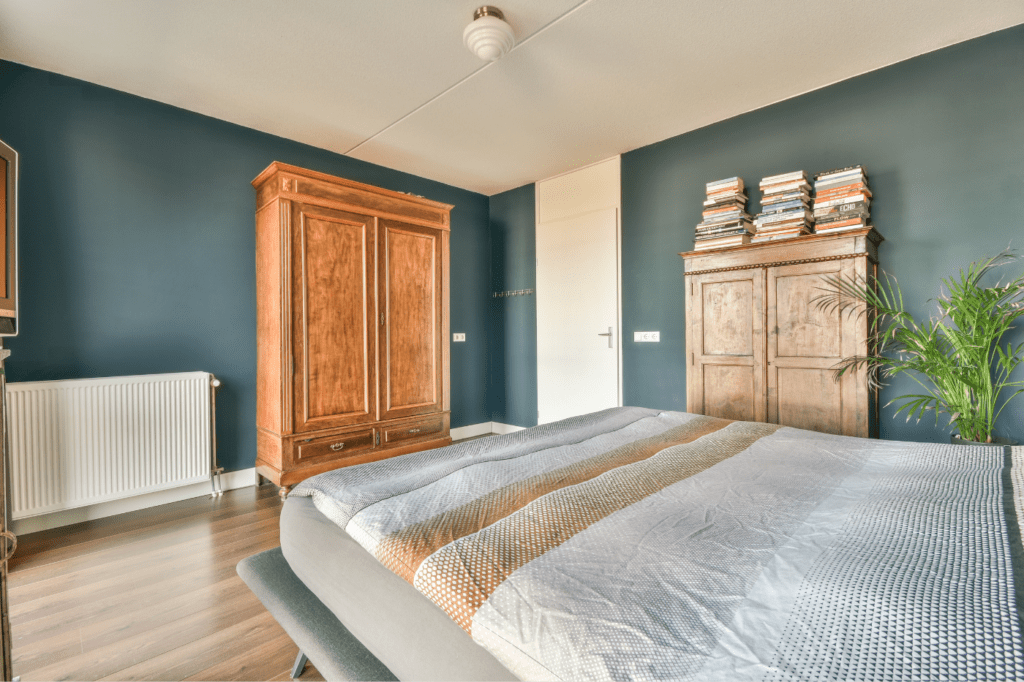
Tips for Cleaning an Old Wooden Wardrobe
1. Dusting and Vacuuming
- Begin by dusting the wardrobe’s surfaces using a soft cloth or a duster.
- Follow up with a vacuum cleaner using a brush attachment to remove any loose dirt or dust from intricate carvings or details.
2. Mild Soap Solution
- Mix a solution of mild soap or wood cleaner with warm water. Dampen a soft cloth with the solution and gently wipe down the entire surface of the wooden wardrobe.
- Avoid excessive water to prevent damage to the wood.
3. Address Stains Carefully
- For stubborn stains, use a mixture of equal parts white vinegar and water or a specialized wood stain remover.
- Apply the solution with a soft cloth, working in the direction of the wood grain. Wipe dry immediately.
4. Polish with Natural Oils
- To restore the wood’s natural shine, apply a small amount of natural oil, such as olive oil or beeswax, using a clean, soft cloth.
- Buff the surface gently to achieve a lustrous finish.
5. Waxing for Protection
- Consider applying a thin layer of furniture wax to protect the wood and enhance its sheen.
- Follow the product instructions and buff the wardrobe after application for a smooth finish.
6. Address Musty Odors
- If the wardrobe has a musty smell, place a bowl of baking soda inside to absorb odors.
- Alternatively, use activated charcoal or cedar sachets to neutralize unwanted scents.
7. Check and Tighten Hardware
- Inspect the wardrobe’s hardware, such as hinges and handles.
- Tighten any loose screws and replace any hardware that is damaged or missing.
8. Preserve with Beeswax
- For antique wooden wardrobes, consider using beeswax to preserve the wood.
- Apply a thin layer and buff gently for protection against moisture and environmental factors.
Remember to test any cleaning or polishing products on a small, inconspicuous area first to ensure they don’t damage or discolor the wood. Regular care will not only clean but also extend the life of your old wooden wardrobe.
How Often Should You Clean Your Wardrobe?
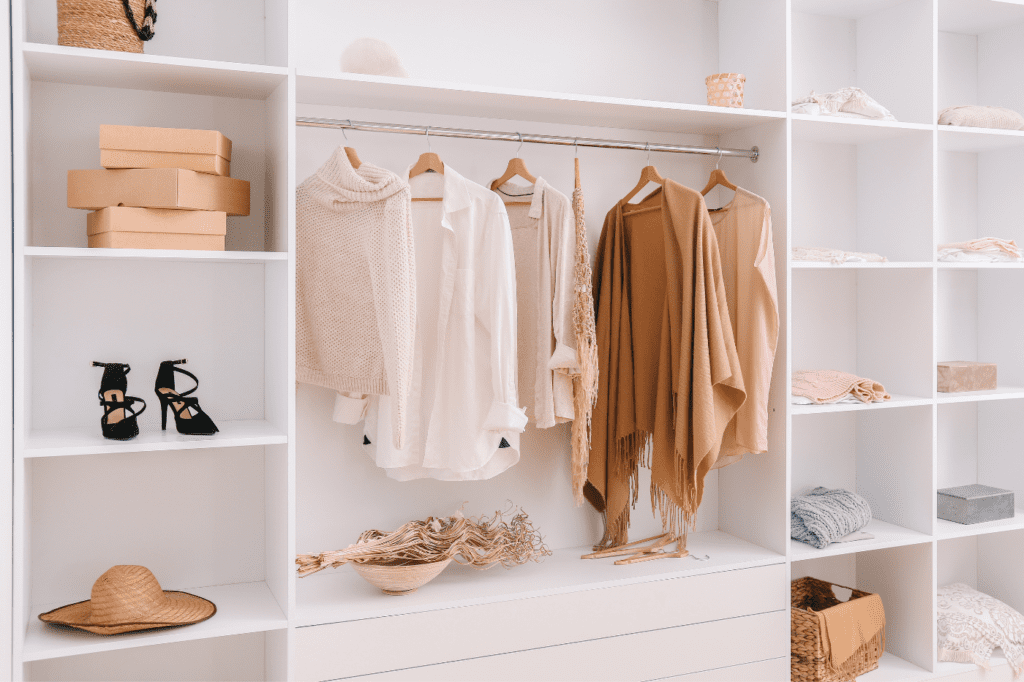
- Seasonal Overhaul:
- Conduct a thorough cleaning and organization of your wardrobe at the change of each season.
- This allows you to rotate clothing, evaluate what to keep or discard, and adjust your wardrobe to the current weather.
- Monthly Maintenance:
- Set aside time for a monthly maintenance session.
- This involves a quick assessment of your closet, addressing any items out of place, and reorganizing as needed.
- It’s an opportunity to prevent clutter from building up over time.
- 15-Minute Sessions:
- Incorporate brief 15-minute cleaning sessions every two to four weeks. These short bursts of focused effort can help you maintain order without feeling overwhelmed.
- Use this time to address specific areas, such as decluttering a shelf, organizing accessories, or putting away freshly laundered clothes.
- Special Occasions or Life Changes:
- Clean and organize your wardrobe during significant life events, such as moving, starting a new job, or a change in personal style.
- This ensures your wardrobe aligns with your current needs and preferences.
How to Clean Your Closet in 15 Minutes
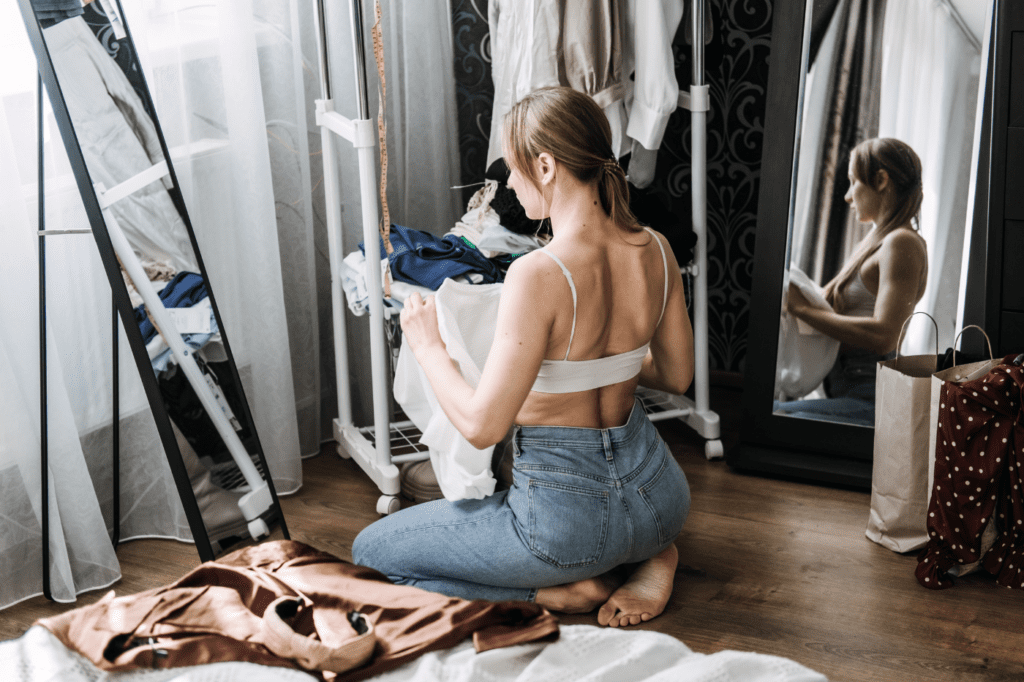
- Set a Timer:
- Begin by setting a timer for 15 minutes. Knowing there’s a specific time limit helps maintain focus and prevents the task from feeling too daunting.
- Quick Assessment:
- Start by quickly scanning your closet. Identify items that are out of place, such as shoes on the floor or clothes on the chair. Return these items to their designated spots.
- Declutter One Area:
- Choose one specific area to declutter during this session. It could be a shelf, a drawer, or a section of hanging clothes. Evaluate each item and decide whether to keep, donate, or discard.
- Organize Accessories:
- Focus on organizing accessories, such as scarves, belts, or jewelry. Untangle necklaces, match socks, or arrange accessories in designated storage spaces.
- Quick Clothing Rotation:
- If applicable, rotate a few clothing items based on the current season. Bring forward spring or summer clothes and pack away winter items. This keeps your wardrobe in sync with the weather.
- Check for Repairs:
- Quickly inspect your clothes for any minor repairs needed, such as loose buttons or loose hems. Set aside items that require attention for future mending.
- Eliminate Unwanted Items:
- Use this time to identify a couple of items you no longer wear or need. Place them in a donation or sell pile. This small step helps gradually reduce clutter.
- Wipe Down Surfaces:
- Keep a microfiber cloth or cleaning wipe handy to quickly wipe down any visible dust or dirt on closet surfaces. This adds a touch of freshness to your closet space.
- Evaluate Shoes:
- Organize and tidy up your shoe collection. Line them up neatly and check for any pairs that need cleaning or repairs. Consider investing in shoe racks or storage solutions to keep them organized.
- Finish with a Quick Scan:
- Use the remaining time to do a final scan of your closet. Ensure everything is in its place, and the space looks tidy. If there’s more to address, make a note for your next 15-minute session.
By consistently dedicating short, focused sessions to your wardrobe, you can maintain an organized and clutter-free space without feeling overwhelmed.
These regular sessions also prevent the need for extensive cleaning and organizing marathons.
Why Is My Wardrobe So Dusty?
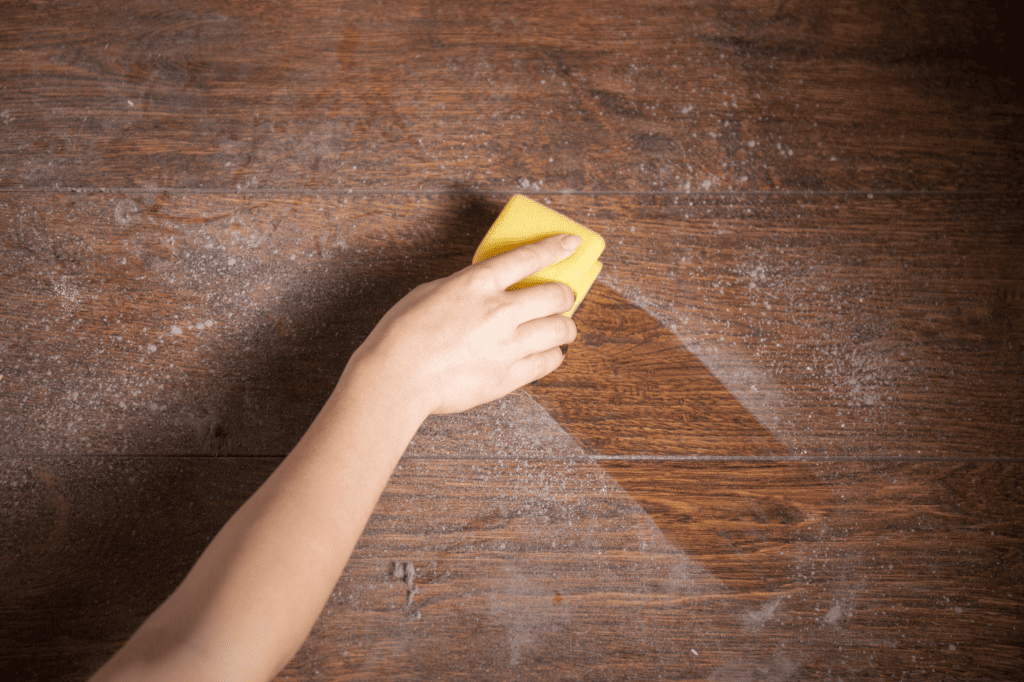
- Open Windows and Doors:
- Natural ventilation can bring in dust from the outdoors.
- If you often leave windows or doors open, especially in areas with high dust levels, it can contribute to the accumulation of dust in your wardrobe.
- Fabrics and Fibers:
- Fabrics, especially natural fibers like cotton and wool, shed tiny fibers over time.
- These fibers can contribute to dust buildup on surfaces, including the contents of your wardrobe.
- Static Electricity:
- Static electricity can attract dust particles to surfaces.
- Clothing and accessories made of synthetic materials, as well as certain types of flooring, can contribute to the buildup of static charge in your wardrobe.
- Indoor Air Quality:
- Poor indoor air quality can result in more dust settling on surfaces.
- Factors such as smoking indoors, cooking without proper ventilation, or living in areas with high pollution levels can contribute to dust-related issues.
- Proximity to High-Traffic Areas:
- If your wardrobe is located near high-traffic areas in your home, such as entryways or frequently used doors, it may be more prone to dust settling as people move in and out.
How to: Keep Your Wardrobe Dust-Free for the Future
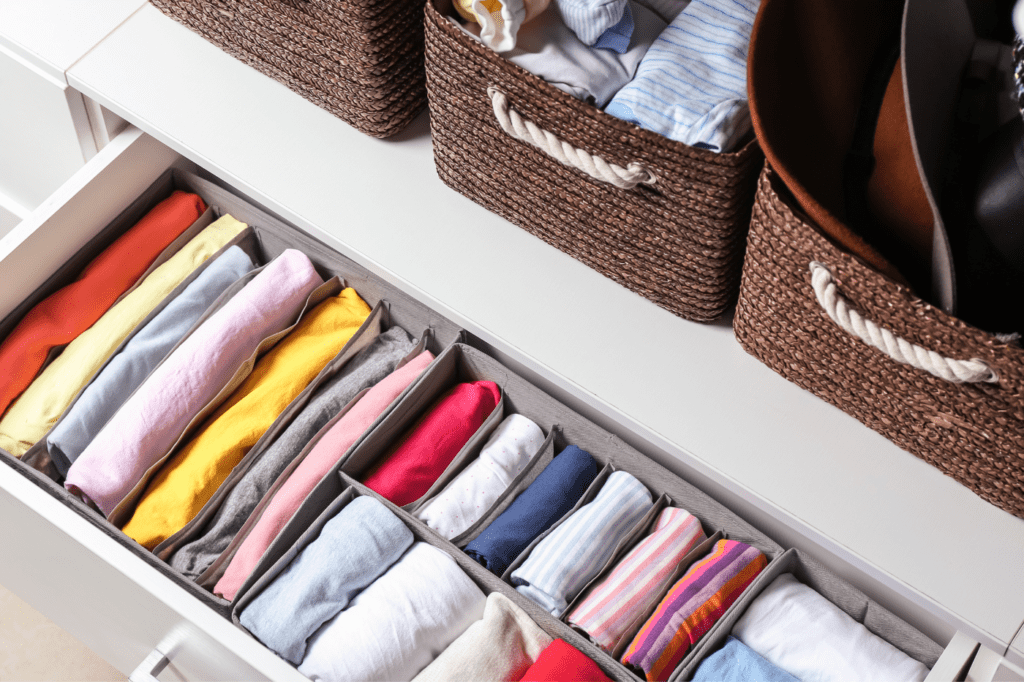
- Use Dust-Repellent Fabrics:
- Choose storage solutions, such as garment bags or fabric organizers, made from materials that repel dust.
- Some fabrics have anti-static properties or are less likely to attract and hold onto dust particles.
- Regular Cleaning Routine:
- Establish a regular cleaning routine for your bedroom, including dusting surfaces and vacuuming the floor.
- This helps minimize the overall dust levels in the room, reducing the likelihood of it settling in your wardrobe.
- Invest in Air Purifiers:
- Air purifiers can help improve indoor air quality by capturing and filtering out dust particles.
- Place one in your bedroom, especially if you live in an area with high pollution or have specific indoor air quality concerns.
- Window Fly Screens:
- Install fly screens on your windows to allow fresh air to circulate while minimizing the entry of outdoor dust and insects.
- This way, you can enjoy ventilation without compromising the cleanliness of your living space.
- Use Door and Window Seals:
- Ensure that doors and windows are properly sealed to minimize the entry of outdoor dust.
- Weather-stripping or door sweeps can be effective in creating a barrier against dust infiltration.
- Choose Closed Storage Solutions:
- Opt for wardrobes or closets with doors to provide a physical barrier between your clothes and the external environment.
- Closed storage solutions help protect your clothes from dust and other environmental factors.
- Regularly Launder Bedding and Curtains:
- Bedding and curtains can also contribute to dust in your bedroom.
- Wash these items regularly to prevent them from shedding fibers and adding to the overall dust levels.
- Use Dust-Repellent Furniture Polish:
- When cleaning your wardrobe, use furniture polish that has dust-repellent properties.
- This can create a protective layer on surfaces, making it more difficult for dust to settle.
- Avoid Smoking Indoors:
- If possible, avoid smoking indoors. Smoking generates particles that can contribute to dust buildup on surfaces.
- Create a designated outdoor area for smoking to minimize indoor air pollution.
- Store Unused Items Properly:
- Items stored in your wardrobe that aren’t frequently used may collect dust over time.
- Consider using storage bins, vacuum-sealed bags, or garment bags to protect these items from dust when not in use.
By incorporating these practices, you can reduce the likelihood of dust accumulation in your wardrobe and maintain a fresh, clean living environment. Regular maintenance and thoughtful measures contribute to a dust-free and organized space.
Conclusion
Now, here’s the subtle call to action:
As you move forward with your freshly organized closet, pay attention to the positive shift in your daily routine. Notice the ease of selecting outfits, the joy in wearing pieces that resonate with you, and the mental clarity that comes with a decluttered space.
Should you ever feel the encroaching chaos again, return to these insights. Consider making spring cleaning your wardrobe a regular ritual, ensuring your wardrobe remains a reflection of your evolving style.
Remember, a curated and organized wardrobe isn’t just a one-time achievement but a continuous process.
The more intentional you are with your clothing choices, the more joy and satisfaction your closet will bring. Happy spring cleaning!








